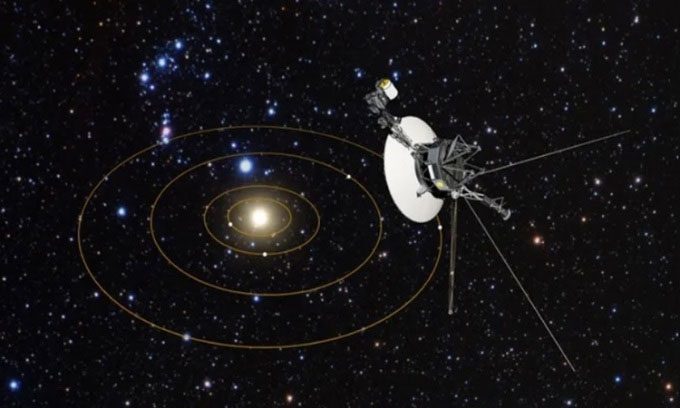Currently, the only data that Voyager 1 is transmitting back to Earth is a repetitive string of binary characters, and NASA engineers may take several weeks to troubleshoot the issue.

Simulation of Voyager 1 looking back at the Solar System from a great distance. (Photo: NASA)
NASA’s Voyager 1 spacecraft is currently unable to transmit any scientific or system data back to Earth, Space reported on December 12. The 46-year-old spacecraft can receive commands, but the problem seems to originate from its onboard computer. The Flight Data System (FDS) of Voyager 1, which specializes in collecting information and technical data from the spacecraft’s scientific instruments, is no longer communicating as expected with the telecommunications controller, according to NASA.
Under normal operations, the FDS organizes the spacecraft’s information into data packets, which are then transmitted back to Earth via the Telemetry Unit (TMU). Recently, the data packets have become stuck, transmitting a repetitive pattern of 1s and 0s. The Voyager engineering team traced the issue back to the FDS, but it could take several weeks before a solution is found.
Voyager 1 and Voyager 2 were launched in 1977 and have operated longer than any spacecraft in history. Both are in interstellar space, traveling over 24 billion kilometers from Earth. In fact, they are so far away that it takes nearly a day for signals to reach the spacecraft and another day to receive a response. Communication with Voyager 1 takes 45 hours. Therefore, when NASA engineers send fixes for the spacecraft’s FDS, they will have to wait until the next day to determine if the fixes are effective.
The solution is unlikely to be as simple as turning the system off and on again. The age and hardware of the spacecraft present a multitude of challenges. NASA technicians must work with technology that was available in the 1970s, sometimes requiring them to devise innovative software fixes. This is not the first malfunction Voyager 1 has experienced in recent years. The spacecraft had issues with its Attitude and Articulation Control System (AACS) back in May 2022 and transmitted meaningless telemetry data for several months before resolving it.
Nasa engineers also updated the onboard software in October 2023 to prevent debris accumulation in the spacecraft’s thrusters. However, such updates cannot be made quickly. According to NASA, finding solutions to the challenges faced by the spacecraft often involves consulting original documentation written decades ago by engineers who are not involved in solving the current problems. As a result, the engineering team needs time to understand how a new command will affect the spacecraft’s operations to avoid unintended consequences.


















































